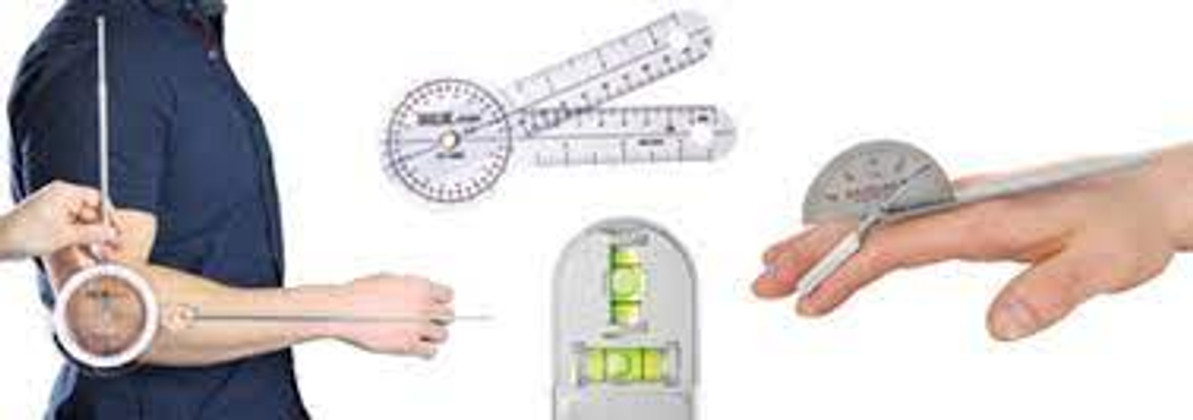Maximizing Patient Outcomes: The Role of Range of Motion Assessment Products in Healthcare
Range of Motion (ROM) Assessment Products stand as pillars in the realm of medical diagnostics, especially in physical therapy and rehabilitation. These instruments serve as invaluable aids for healthcare professionals, enabling them to precisely gauge the extent of movement across various joints in the body. The importance of these assessments cannot be overstated, as they not only assist in evaluating joint flexibility but also play a crucial role in identifying restrictions or irregularities, monitoring treatment progress, and tailoring personalized rehabilitation plans for patients.
Inclinometers: Among the arsenal of ROM assessment tools are inclinometers. They stand out for their ability to measure angles of inclination or tilt accurately. By assessing joint ROM across multiple planes, inclinometers provide therapists with essential data regarding spinal curvature, joint flexion/extension, abduction/adduction, and rotation. Whether in handheld or attachment forms, these devices deliver precise measurements crucial for clinical evaluations, aiding therapists in making informed decisions about patient care.
Goniometers: Another cornerstone in ROM assessment are goniometers. Goniometers comprise of two arms and a protractor, facilitating the accurate measurement of joint angles. Widely used in physical therapy, these instruments assess ROM during both active and passive movements, offering insights into critical parameters such as knee flexion, elbow extension, shoulder abduction, and wrist dorsiflexion. With various sizes and types available, including digital versions, goniometers cater to diverse anatomical regions and patient needs, empowering therapists with versatile diagnostic capabilities.
Performance Attainment ROM (PAROM): Unlike static ROM measurements, PAROM adopts a functional approach by evaluating ROM during specific tasks or activities. This dynamic assessment method allows therapists to observe and quantify a patient's ability to achieve requisite ROM within the context of daily or sports-related movements. By analyzing mobility during tasks like reaching, lifting, squatting, or walking, PAROM offers insights into joint mobility, muscle strength, and movement coordination, thus informing tailored rehabilitation programs aimed at improving functional outcomes.
Each ROM assessment product boasts unique advantages and considerations, and therapists must carefully select the most suitable tool based on assessment objectives, patient characteristics, and clinical settings. By integrating ROM measurements into assessments, physical therapists can accurately evaluate joint mobility, monitor progress, and optimize treatment strategies to foster recovery and enhance functional performance for patients.
Importance of Range of Motion in Patient Outcomes:
Range of motion is a critical aspect of musculoskeletal health and functionality. Impaired ROM can significantly impact a patient's quality of life, leading to decreased mobility, increased pain, and reduced independence in daily activities. Moreover, limited ROM can predispose individuals to a higher risk of injuries and exacerbate existing musculoskeletal conditions.
In the context of rehabilitation, monitoring and improving ROM are essential goals to enhance patient outcomes. A comprehensive understanding of an individual's ROM allows therapists to tailor interventions that address specific limitations and facilitate optimal recovery. By tracking progress through ROM assessments, therapists can adjust treatment plans accordingly, ensuring that patients achieve meaningful improvements in mobility and function over time.
Furthermore, ROM assessments serve as valuable tools for early detection of musculoskeletal issues and progression monitoring in chronic conditions. By identifying subtle changes in joint mobility, healthcare professionals can intervene promptly, preventing further deterioration and preserving overall musculoskeletal health.
In conclusion, Range of Motion Assessment Products play a vital role in the holistic management of musculoskeletal conditions and rehabilitation. By providing accurate measurements and valuable insights into joint mobility, these tools empower healthcare professionals to deliver personalized care and optimize patient outcomes. Through diligent application and integration into clinical practice, ROM assessments contribute significantly to enhancing the mobility, functionality, and overall well-being of patients across diverse healthcare settings.
Recent Posts
-
Acupuncture vs. Dry Needling: What’s the Difference?
At first glance, acupuncture and dry needling might seem identical. Both involve inserting thin need …Jun 11th 2025 -
What Is Dry Needling? A Modern Approach to Pain Relief and Muscle Recovery
Chronic muscle pain, tension, and restricted movement can significantly impact your daily life, sign …Jun 11th 2025 -
The Kinetic Chain and Its Importance?
The kinetic chain is a key principle in physical therapy, referring to the way muscles, joints, and …Apr 18th 2025




